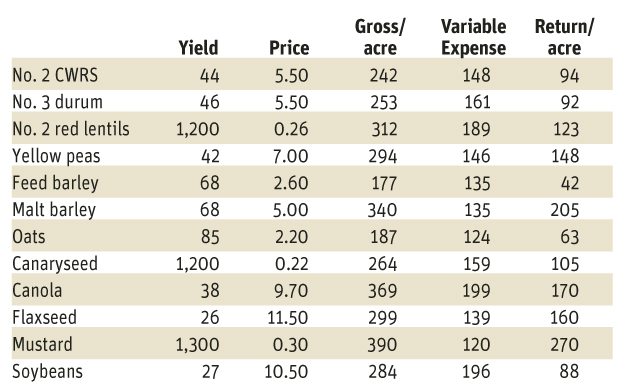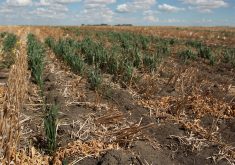Despite a large crop, profitability of the grain sector will decline this year.
Here’s how crop returns stack up based on Saskatchewan numbers. In Alberta and Manitoba, average yields are somewhat higher, but costs per acre also tend to be somewhat higher so the general trends will be similar in most cases.
The yield estimates are in bushels or pounds per acre and come from the Saskatchewan Ministry of Agriculture’s latest crop report. Prices come from various on-line sources and are expressed in dollars per bushel except for lentils, mustard and canaryseed which are in cents per pound.
Read Also

Proactive approach best bet with looming catastrophes
The Pan-Canadian Action Plan on African swine fever has been developed to avoid the worst case scenario — a total loss ofmarket access.
Many producers have production contracted at higher prices, but this analysis is based on current prices on what is likely to be the dominant grade.
Variable expenses (seed, fertilizer, chemical, crop insurance, fuel, etc.) for each crop come from the ministry’s Crop Planning Guides published back in January. In most instances, expenses from the dark brown soil zone have been used.
Fixed expenses (machinery depreciation, land costs, repairs) vary greatly from one producer to the next, but most of us need a return over variable expenses of about $100 an acre to make money.
As you can see from the table, given average yields at prevailing prices, many crops are falling short.
Of course, some will have above-average yields, others below average or have quality issues.
Fusarium appears to be a huge downgrading factor in durum.
With below-average-yields and dropping prices, red lentils are a major disappointment. Rarely has the average return for yellow peas outdistanced lentils, but it’s happening this year.
Canola is showing strong yields and decent returns,and flaxseed isn’t far behind. Even with dropping spot prices, mustard shows substantially higher returns than the other two oilseeds, but the mustard market is limited.
Malting barley is a bright spot for those with quality crops. While oat returns appear dismal, some producers generated high yields and have access to domestic processors or to the U.S. marketplace.
Overall, many farms will see belt-tightening. Crop insurance claims will be up, particularly on lentils. Despite higher than normal yields, softening prices reduced returns.


















